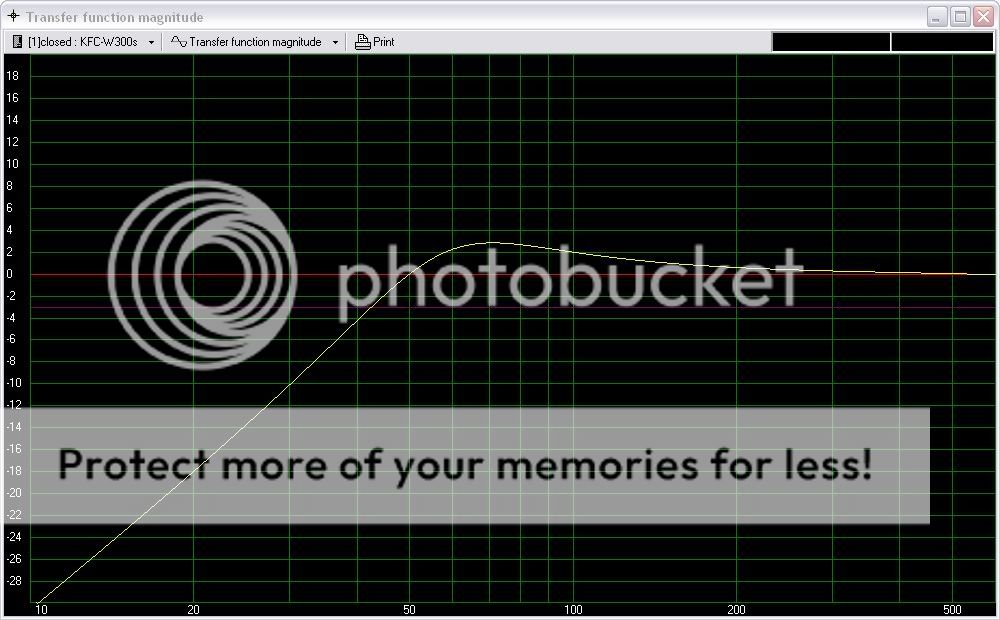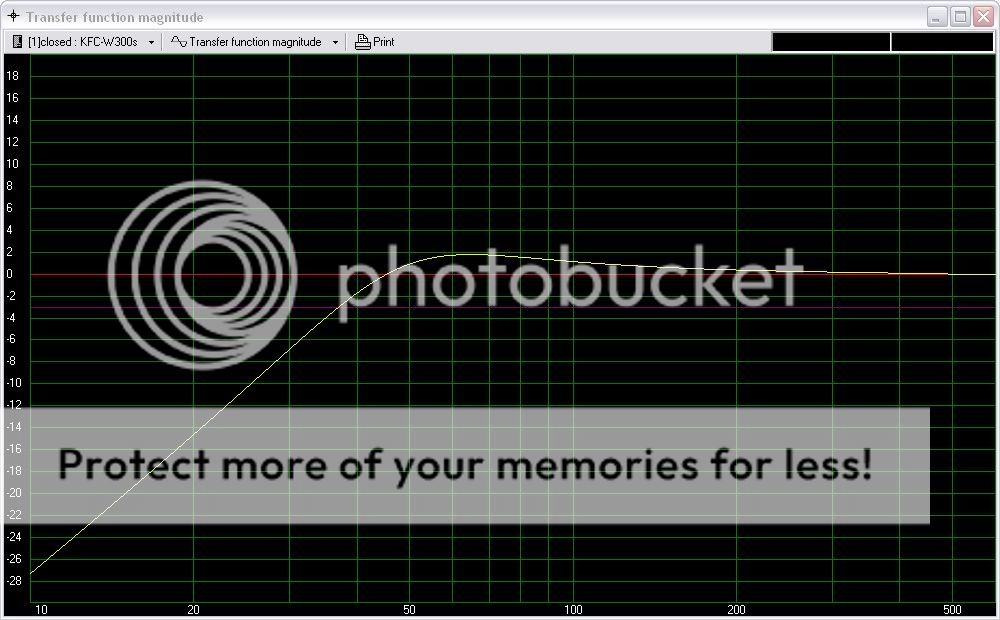I Have a few questions about Sub enlosures, for the experts
I recently purchased a Kenwood Sub KFC-w300S, a really cheap one for my first attempt at making a Sub enclosure.
I'm going to build sealed because they are smaller and more forgiving of mistakes (so i've heard)
On the lierature and some of the web-sites that sell them, it says to enclose them in a sealed box of 28 litres, this is repeated in lots of places
see https://www.justkenwood.co.uk/speakers01/kfcw300s.asp
Kenwoods detailed spec sheet on the other-hand
Here: https://www.kenwood.be/kenwood/kenprod.nsf/_/1984BDFA60C4362D01256F69005AEFF0
says 47.25 liters
Which would you trust?
I plotted both on WinISD Pro to see the difference:
Closed Kenwood Box 28 Liters

Closed Kenwood Box 47.25 liters

Now, I know what i'm looking at here, a frequency reponse graph, but in real terms when your designing a speaker, what do you want out of the sub? as flatter frequeny response as possible? Which would point towards the larger speaker. Or a peak in the lower frequencys? which would point to the 28 liter enclosure.
I played around with the simulator for a while, and the only real difference the sise of the box seemed to make (this is sealed remember) was the frequency reponse got flatter as the enclosure sise increased.
A question, about materials.
I intend to make an enclosure out of water pipe.
It's 12" high pressure water main.
Its made out of 20mm thick PVC, I'm going to cap one end with MDF 18 or 20mm and mount the speaker in the other.
Does this sound suitible? And if not, why not?
And another thing, (columbo style), is it worth stuffing a sealed enclosure?
Thanks for reading
I had written a response and then deleted it because I looked again at the graphs and changed my mind. At first I thought that the second response was the best, but now I think that the first graph looks normal for a sealed subwoofer. If you look at where 60 Hz is, and then go down 12 db's, you will be right on 30 Hz, which is one octave down. That's about normal for a sealed subwoofer. Although the peak is higher with the 1 cu ft box, it still isn't a sharp peak but a gradual hump. I think it looks pretty good and would probably go with the smaller of the two enclosures for the sake of weight, expense, space, etc. For the additional 3/4 cu ft that the larger box entails, the difference in response doesn't look great enough to make it worth it.
I would use the stuffing, as I use it in all enclosures that I build. I haven't built a tube before but it sounds like it should work. Post some pics in the rides gallery when you get it done.
-------------
Build the box so that it performs well in the worst case scenario and, in return, it will reward you at all times.
Thanks for the reponse, It makes more sense now.
I've heard stuffing stops hi-freq res, does it also increase the internal voulume? if so, should you reduce the sise of the enclosure to compensate for that?
It simulates a increased internal volume, yes. If it is in your calculations then you may want to put that in the planning.
-------------
99 Blazer LT. Yellow Top. Big 3. Infinity Kappa Speakers All Around. Jensen CD/DVD flip out. 2 Infinity Kappa Perfect 12DVQs powered by a Alpine PDX600.1 (in one custom box, building a FG box)

